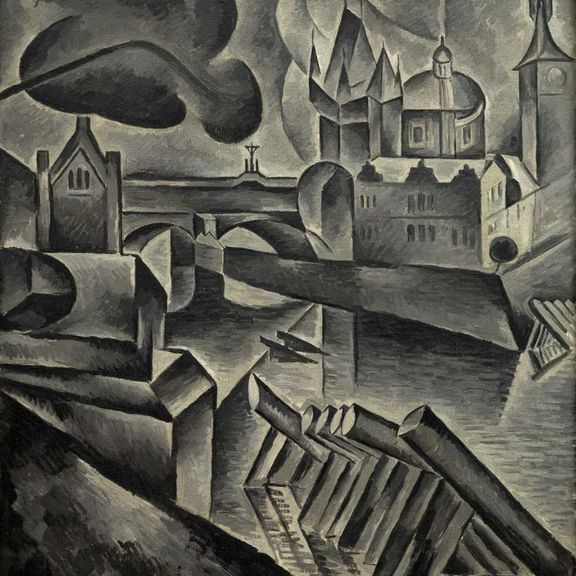
oil on canvas
1935
lower left
65 × 88 cm
framed
This confident and courageous painting entitled Supetar, masterfully executed in the artist’s distinctive style full of unmistakable characteristics, comes from his so called “blue period”. It impresses the beholder with its completely innovative composition divided into two plans, with an anchored boat and a pier in the foreground and the Hotel Praha in the background. This work combines not only Špála’s quest for colour harmony with the dominance of radiant blue pigment enriched with a palette of warm red tones, but also the calming of expressive painting lines and surfaces. This highly representative “snapshot” was executed in August 1935, when the artist was staying on the Dalmatian island of Brač, where he had the opportunity to find new stimuli in sensual reality and thus reached one of the highlights of his work. Exceptional works from this highly attractive period radiate optimism and perfectly capture the summer seaside atmosphere. The painting is listed in Špála’s inventory under No. 877 and described “From Supetar. Hotel Praha, part of a pier in the front, sea with a boat, English blue”. According to the stamp on the reverse of the canvas, the work was presented at the SVU Mánes members’ exhibition in 1936 (cat. No. 383). Assessed during consultations by PhDr J. Machalický and prof. J. Zemina. From the attached expertise by PhDr. K. Srp: “[…] The painting based on several shades of blue shows a view from the pier of Hotel Praha, whose simple structure forms a dominant feature occupying the left part of the painting, whilst the right opens wide into the sea and sky; two blues, each executed in a different type of oil paint. From this point of view, the side wall of the hotel is interesting, drowning in the blue shade which is further emphasised by the dark blue windows. Špála based [the painting] on the direct observation of the chosen subject-matter, however, he brought into it his own painting concept which was distinctive of his and through which he was able to imprint his inner artistic order on the changing world. […]”







